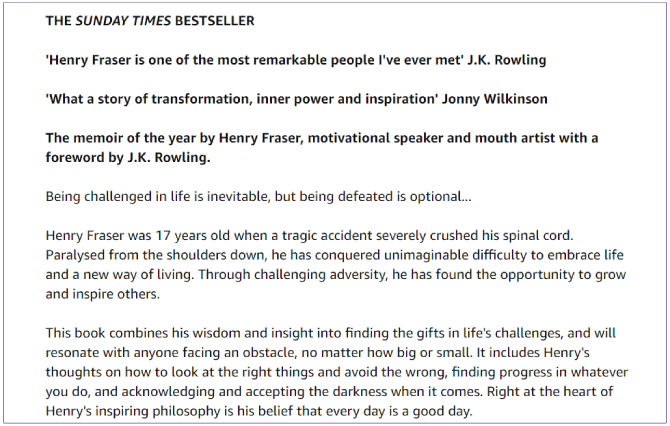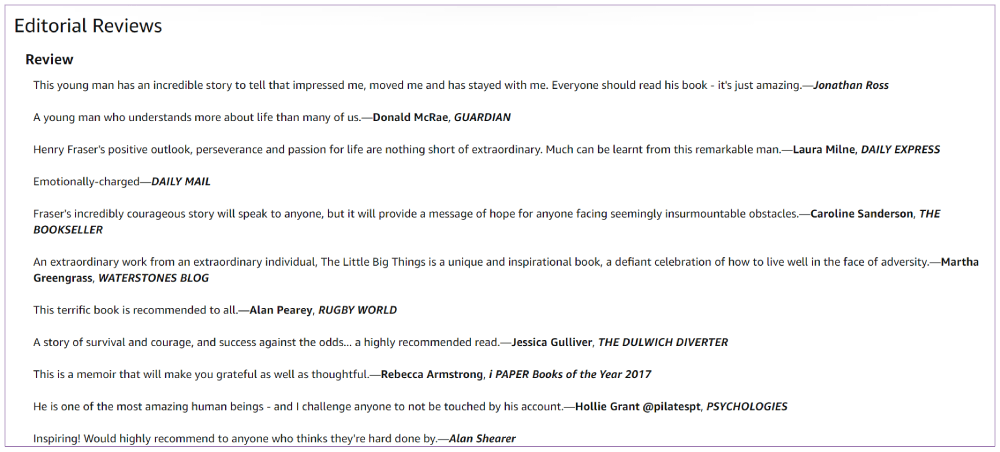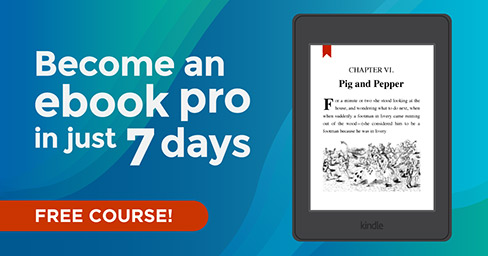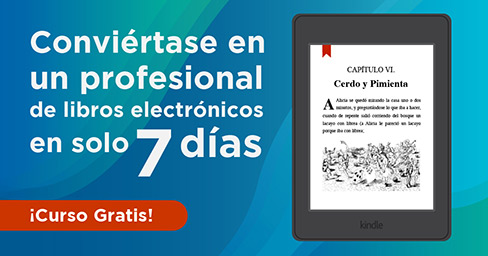How to Sell More Books on Amazon in 9 Simple Steps
“The End.” Ah, those two sweet monosyllabic words every author loves to write. You’ve finally finished your masterpiece of a book and—after some well-deserved celebrating—it’s time to turn it into an Amazon bestseller. And why not? If other authors can do it, so can you!
We won’t lie and claim it’s easy to sell books on Amazon; after all, it’s a competitive market, and readers are spoilt for choice. But it’s definitely 100% doable if you go about it the right way, starting with Amazon’s algorithm.
In this article, we’ll show you how to absolutely nail that algorithm by sharing our nine golden tips on how to sell more books on Amazon.

How to Sell More Books on Amazon: Breaking Down Amazon’s Algorithm
The key thing to remember about Amazon’s algorithm is that it’s geared toward Amazon customers. Its aim is to make their search on Amazon as effortless as possible by providing them with results that are relevant to their interests.
Picture a customer searching on Amazon for a new memoir to read. They type in the words “memoir” and “inspirational” and Bam! One of the top search results is Henry Fraser’s inspirational memoir The Little Big Things.
Magic? Nope. It’s the algorithm.
The reason Henry Fraser’s book comes up in that search is that it has the right metadata (such as the title, subtitle, description, and keywords). Data is what Amazon’s algorithm needs in order to function: the more information you include about your product, the more likely the algorithm will recommend it to customers.
Think of it as a matchmaking process between customer and product; you can’t have a perfect match without the right information, can you?
How to Optimize Your Book’s Metadata to Sell More Books on Amazon
After creating an Amazon Kindle Direct Publishing (KDP) account, you are now ready to start adding data about your book (click here for a detailed guide on how to use Amazon’s KDP). Using Henry Fraser’s book as an example, let’s look at what it means to optimize your book’s data on Amazon.
Step 1: Create a Cover That Tells a Story
Let’s face it. We’re visual creatures, and although looks aren’t everything, they do matter. An attractive—and relevant—book cover is what will attract readers to actually look inside your book.
This is Henry Fraser’s hardback cover. The artwork consists of a simple painting: a boy in a wheelchair facing the sea. The cover’s color scheme is blue and yellow, in line with the setting. And the font used for the title is playful to convey the author’s young nature.
Aside from the artwork, what readers will probably notice right away is the testimony at the bottom from J.K. Rowling’s foreword and Jonathan Ross’s endorsement at the top.
Thus, the cover conveys the book’s content in three important ways:
- The wheelchair brings the author’s disability to the forefront.
- The beach highlights the setting in which the author’s accident occurs.
- The blue sky and endless sea symbolize the hope and endless possibilities ahead of the author.
Step 2: Choose Your Title and Subtitle Wisely
Your book cover is a powerful tool, but an even stronger first impression that your book can make is via its title.
Imagine you’re in an elevator with your favorite author and have fifteen seconds to convince them to endorse your book. There’s no time to give them a detailed account or even pull up a picture of the cover from your phone. So how do you intrigue them in as few words as possible? Give them a title to remember!
Note the title and subtitle of Henry Fraser’s book The Little Big Things: A Young Man’s Belief that Every Day Can Be a Good Day. The paradox in the title “little big” serves to intrigue readers, and the subtitle demonstrates that this is a memoir and a self-help book. A memorable and informative title results in elevator pitch success!
Step 3: Write a Great Book Description
If customers are attracted to your cover and title, then naturally they will want to read the book’s description. This description should be concise while still mentioning enough to convince readers to buy the book—or at least to leave them curious to use Amazon’s “Look inside” feature and read more.
Here are three key things to look out for when writing an Amazon book description:
- The Headline: Although Amazon’s book description box allows you to include up to 4,000 characters, it will only display the first few lines. If readers want to see the rest of your description, they will have to click “read more.”
This is why your first lines (your description’s headline) are very important. Your headline can be an award your book received, a pull quote from a great review, or a powerful line that packs in your book’s genre and its main themes.
- The Blurb: Include your book’s blurb in the book description box as a paragraph or two. This serves to add meat to your headline, telling readers what your book is actually about.
- The Buying Prompt: End your description with a reason why people should buy your book. This is your “buying prompt”; it urges readers to take action and click on Amazon’s “Add to Cart” button.

This is Amazon’s book description section for Henry Fraser’s memoir, and here is how it’s divided and why that works:
- Starts with a headline that mentions the book’s accolade: it is a Sunday Times bestseller;
- Includes brief endorsements by big names like J.K. Rowling and Jonny Wilkinson;
- Places the book’s tagline right above the descriptive text, telling readers what the book is about in a single line;
- Provides a clear descriptive text with brief paragraphs that contain enough information to keep the reader wanting more;
- And includes a strong buying prompt: “This book… will resonate with anyone facing an obstacle.”
Step 4: Get More Book Reviews
One of the most important selling points of a book is its book reviews. They act as proof that everything promised by your cover, title, and description will in fact be delivered in the book. Reviews vouch for your product, so collect as many as you can!
There are two types of book reviews: reader and editorial reviews, and both are important in different ways.
- Reader/Customer Reviews
Reader reviews are written by individual customers (readers) and are usually more personal, emotional, and casual. You can approach readers yourself and direct them to leave reviews of your book; this is an important way of generating a good “buzz” around your publication. After all, readers want to buy books that other readers like them have enjoyed.
There are two routes to take in order to obtain reader reviews:
- Contacting readers before the book is out on Amazon
This is done by offering advance reader copies of your book to your most loyal readers. This way you’ll collect a number of reviews that will be visible on your book’s Amazon page as soon as it’s live.
- Contacting readers after the book is published
Email all your readers to announce that your book is out and to request that they leave a review when they’re done reading it. If you don’t have an author’s mailing list, it’s time to create one!
Also, make sure to include a link at the end of your book that directs readers to leave a review. This will generate an organic buildup of reviews as your book continues to sell, keeping it performing well on Amazon.
- Editorial Reviews
According to Amazon, “an editorial review is a more formal evaluation of a book, usually written by an editor or expert within a genre.” Editorial reviews list your book’s pros and cons, and hold it to a set of professional standards. As a result, the language of editorial reviews is often unbiased, formal, and technical.
To obtain editorial reviews, you will likely have to reach out to review businesses and book review publications. Usually, authors pay to get editorial reviews, but you can find some free options, too. Depending on the business/publication, you’ll have to follow the relevant guidelines in order to formally submit your manuscript for review.

Here is the Editorial Reviews section for Fraser’s The Little Big Things. If a customer was still debating whether to buy this book, a quick scan of the 14 positive editorial reviews and the 1,000+ customer reviews (with a rating of 4.7 out of 5 stars), would probably drive them to click that “Buy” button—and fast!

Step 5: Choose Your Keywords
Recall how easy it was to find Henry Fraser’s memoir on Amazon? All it took was typing the words “inspirational” and “memoir.” So how does that actually happen? What can you do to direct customers to find your book among all those other books out there?
It’s all in the keywords you choose. In the case of Fraser’s book, the keywords are geared toward customers looking for inspirational life stories and memoirs, which explains the immediate hit in the search above. For example, good keywords for Fraser’s memoir would include: tone (e.g. uplifting), themes (e.g. overcoming obstacles), and subject (teenager with disability).
But how can keywords actually increase your book sales on Amazon? Well, the right keywords will increase your book’s visibility (i.e. they will put your book at the top of the search results). Greater visibility results in greater sales. After all, who’s going to go through pages and pages of search results every time they want to buy a good book?
Find the keywords that are suitable for your book’s genre and readership, and then include them in the Keywords section on your KDP Publishing dashboard. This section allows you to use up to seven keywords and phrases.
A good way to test out your keywords is by typing them into Amazon. What sort of results comes up? Are they relevant to the topic you’re searching for? If not, keep fine-tuning them until you arrive at the desired search results.
Important read: Amazon’s Make Your Book More Discoverable with Keywords
Step 6: Select Your Categories
Amazon also allows you to choose two genres (or categories) for each book. It’s important to choose the categories that are suitable for your book because genres set expectations for your readers.
You certainly don’t want to categorize your work as a Romance just because it contains a love story! For example, Suzanne Collins’s The Hunger Games is a dystopian trilogy, despite the fact that its main characters get caught up in a love triangle. Choosing the wrong category for your work would automatically generate negative reviews and cause you to lose your readers’ trust.
In the case of Henry Fraser’s memoir, the categories are a mix of broad (Survival Biographies) and specific (Biographies of People with Disabilities). This increases the book’s chances of finding the right audience. The board category attracts a large pool of target readers who are interested in all types of survival biographies. The more specific category narrows down the readership further to target those interested in reading about people with disabilities.

Step 7: Work on Your Author Profile
Nowadays, an author’s profile is an essential marketing tool for any book. This is especially true for self-published authors. If you’re planning on writing and publishing many books, you have to build your author brand. You can do this on the author page on Amazon Author Central. Here is a checklist of what to include on your author page:
- Author Bio
This tells your readers who you are and why you’re writing. Remember that marketing yourself is a huge part of marketing your book. Let’s take a look at Henry Fraser’s bio listed on The Little Big Things Amazon page:

Just by reading those four brief paragraphs, the reader feels like they already know a number of important things about Henry Fraser. They go on a journey that starts with Henry’s accident, his disability, and his accomplishments as a mouth-painter, a motivational speaker, and now an author. Now they just have to get their hands on his memoir!
- Author Photo
Although it’s not a necessity, having an author photo is definitely a plus. A good headshot allows readers to put a face to the name. This will enable them to connect with your author brand even more strongly. Not to mention that a professional headshot gives the impression that you’re serious about your career as an author.
- Author Interviews
If you’ve been interviewed before, or even if you’ve recorded videos of yourself discussing your books, then you should add these videos to the author page. Remember that Amazon allows you to link various types of content, so you should use that to your advantage!
- Your Previous Work
It goes without saying that if you have more than one book, the author page is the perfect place for you to link them all. This makes it easy for readers who’ve enjoyed one of your books to discover other titles they might be interested in reading.
- Your Online Presence
Even if you prefer to live in books rather than the social media world, as a modern-day author it’s very important to have some sort of online presence. Social media allows readers to connect with you directly, while an author website is where you can blog about your books and keep readers engaged with your content.
Step 8: Generate Sales—and Keep Them Slow and Steady
Amazon’s algorithm starts giving your book a “ranking” as soon as a customer purchases that first copy. With every copy sold, your book’s ranking rises in your selected categories. This increase in ranking in turn means that your book will appear in the top results of Amazon’s search pages.
So, for instance, in the case of Henry Fraser’s book, every purchase caused it to rise up the ranks of Biographies and Memoirs, until it became listed as a “bestselling” memoir on Amazon.
One thing to bear in mind, however, is that Amazon’s algorithm gives higher rankings to books with consistent sales, rather than sudden bursts of purchases.
Therefore, your book will do better on Amazon if you have a slow and steady stream of sales (e.g. ten books a week), rather than getting all your friends and family to purchase fifty copies in a day.

How to Sell More Books on Amazon Using Price Promotions
Since Amazon’s algorithm encourages steady and consistent book sales, and since even bestselling books will eventually lose their top spots eventually, you need a way to “spice things up” and keep those sales going.
An effective way to give your book a boost and increase its sales is by running book price promotions often. Essentially, you want to decrease the price of your book for a number of days (usually a week). When more customers start buying your book, this will increase its visibility and push it back up the ranking ladder.
With this increase in sales, your book will start showing up in Amazon’s “also bought” section on other books’ pages. So, for instance, if your novel reaches a high ranking in the Humorous Fiction category, it will likely appear on another humorous fiction book’s page. Thus, more traffic from relevant readers will be directed to your own work.
Conclusion
You don’t need to have your book reviewed by J.K. Rowling to increase your sales on Amazon (although that would certainly help!). What you need is good marketing and promotion pre and post your book launch.
So although writing your book is a huge step, you will probably have to invest just as much time and effort in marketing and selling it—from choosing the right cover, all the way to running frequent book promotions. The tips and secrets discussed in this article will take your book’s visibility to a new level, which will ultimately lead to more book sales.
.
Read More
Digital Self-Publishing Challenges (And How to Overcome them)












King Demetrious
July 7, 2023Very informative
Kotobee
September 10, 2023Thank you King for your feedback! 🙂
Kotobee
September 20, 2023You’re most welcome. We’re happy you found this post informative. 🙂